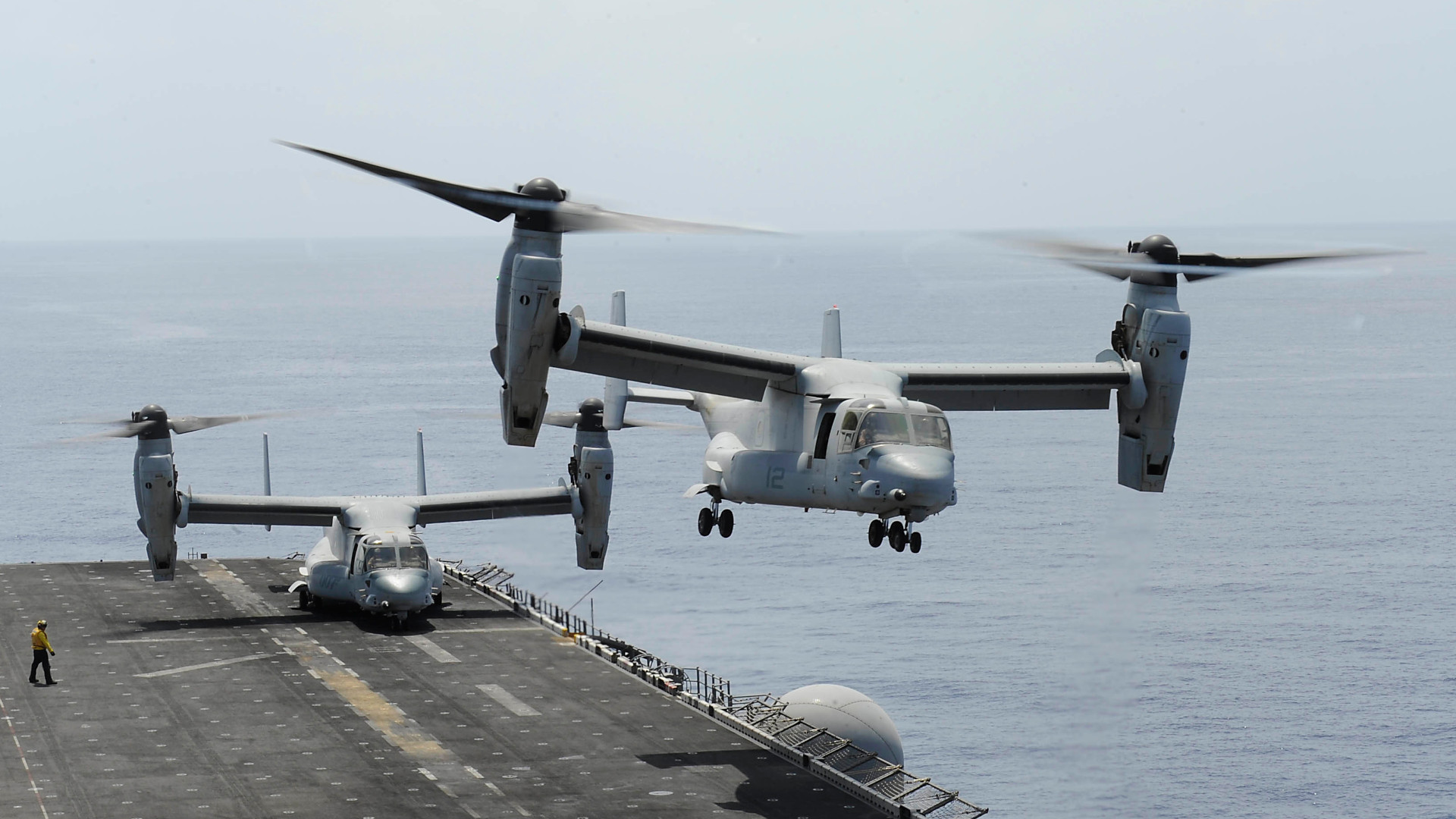A newly released U.S. Marine Aviation Plan shows the service is now looking at a successor to its MV-22 Osprey tilt-rotors actively enough to give it a name: the Next Generation Assault Support (NGAS) aircraft. The Marines have previously said that they expect the Osprey to serve into the 2060s, but have left the door open for that to change depending on other developments. The V-22 series has long been a controversial aircraft with sporadic limitations imposed on its operations, but has been facing notably increased scrutiny following a three-month-long grounding last year prompted by a fatal crash of a U.S. Air Force CV-22.
The U.S. Marine Corps released its latest Aviation Plan earlier today, the first it has put out publicly since 2022. As of March 2024, the Marines had a total of 348 MV-22s in inventory and the service’s objective fleet size is 360 aircraft. Marine Ospreys are currently assigned to units in the United States, as well as ones forward deployed in Japan and Djibouti.
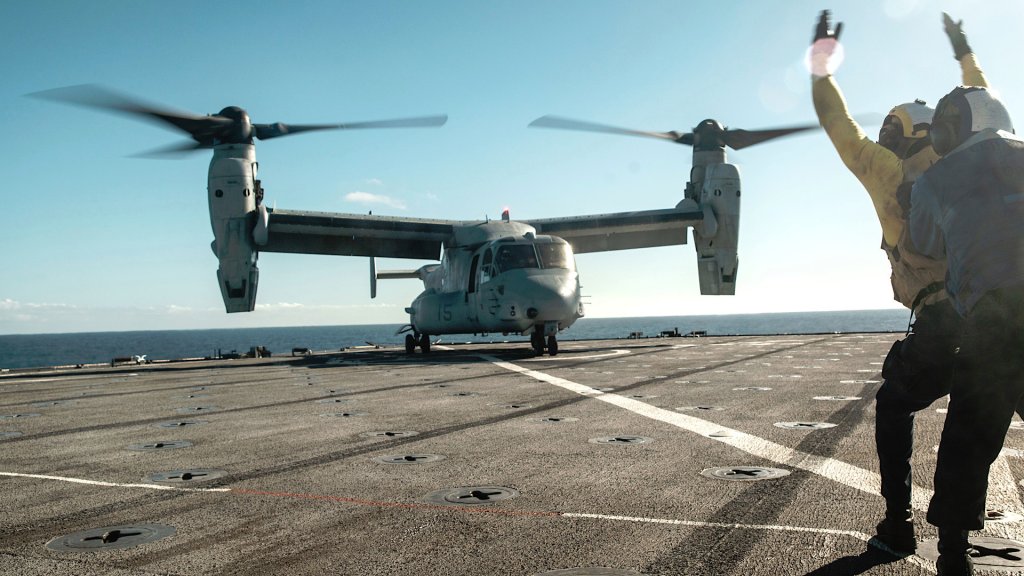
“Configuration, inventory, and supply chain management remain the top areas of focus as the MV-22B Osprey fleet right-sizes to meet future requirements and challenges,” the Osprey section of the 2025 Aviation Plan says. The document highlights various ongoing modernization efforts, including plans to integrate new electronic warfare, communications, survivability, and Degraded Visual Environment (DVE) flight capabilities. It also notes continued safety and reliability-related work, including improvements to the proprotor gearbox that was at the center of the crash that led to last year’s fleet-wide grounding.
A larger Renewed V-22 Aircraft Modernization Plan (ReVAMP) “will ensure platform relevance until the end of its service life and the development and fielding of the Next Generation Assault Support (NGAS) aircraft,” the new aviation plan adds. The Marines announced last year that they had begun initial studies into what ReVAMP might entail, including the potential for the total replacement of major structural components like wings and engine nacelles, as well as other upgrades and modifications.
The Marine Corps does not appear to have previously disclosed the existence of the NGAS effort and the 2025 Aviation Plan provides no further details. TWZ has reached out to the Marines and to the U.S. Navy’s Naval Air Systems Command (NAVAIR), the latter of which serves as the central manager for major aviation programs for both services, for more information. NAVAIR also leads the V-22 Joint Program Office (JPO), overseeing the entire U.S. military Osprey family that includes Air Force CV-22s and Navy CMV-22s. The JPO supports foreign Osprey operators, of which Japan is currently the only one, as well.
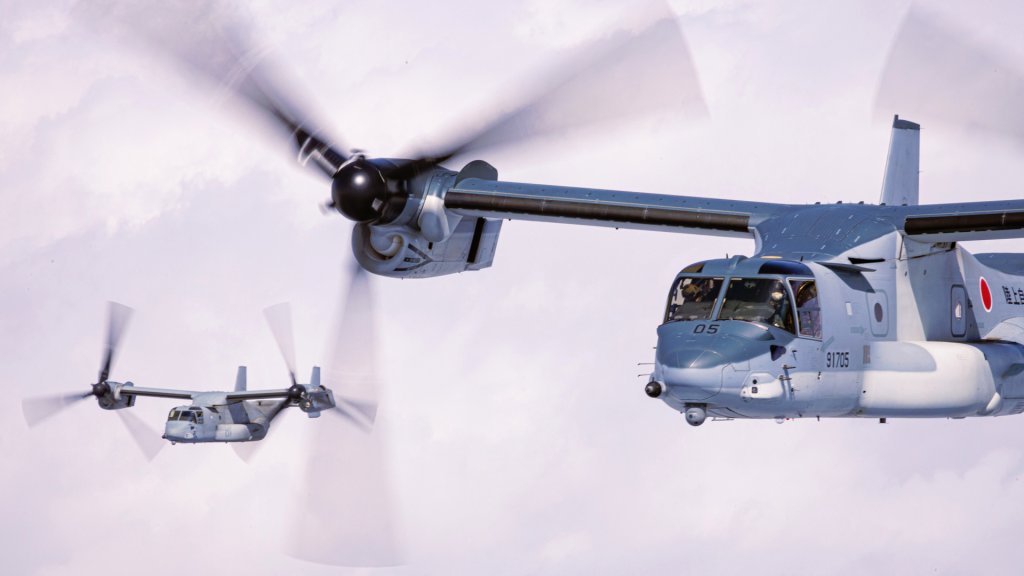
However, the basic fact of the existence of NGAS is still notable given that the Marines have pushed back when asked about planning for a V-22 successor in the past.
“It has a service life for many more years. … we’re approaching in the next couple of years service-level decisions on what we do at kind of a mid-life of the V-22,” Marine Brig. Gen. Richard Joyce, Assistant Deputy Commandant for Aviation, said during a press call in March 2024 in response to a question from this author on what might come after Osprey. “There is no taking our eye off of V-22 and the years of service like what it has in front of us.”
The Marines had made Joyce available to speak to TWZ and other reporters at that time about the lifting of the three-month-long grounding of V-22s following the fatal CV-22 crash, which had occurred off the coast of Japan in December 2023.
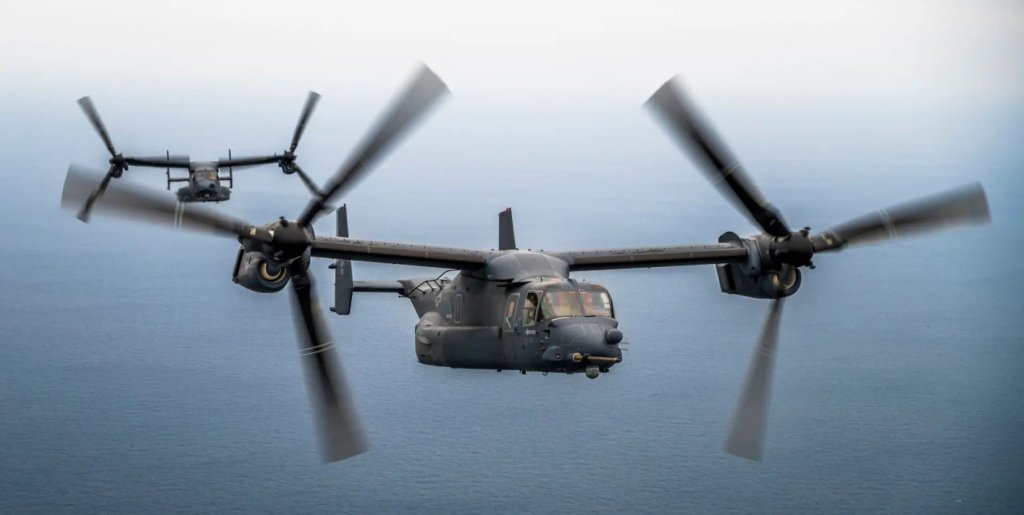
“We are not having conversations right now about anything that replaces V-22. We’re always thinking deep, 2040 and beyond right now, for sure. And then we are acutely focused on our V-22,” Joyce added. “We’re not talking about replacing V-22. We’re thinking deep and we’re focused on V-22 at mid-life.”
“ReVAMP is kind of the next cycle of this thing. So, you’re going to see V-22s darkening the skies for, you know, the next 30 or 40 years without question,” Marine Col. Brian Taylor, then head of the V-22 Joint Program Office, also told TWZ and other attendees at the Modern Day Marine exhibition in April 2024. “There is a ton of life left in this platform, and there is a ton of mission left in this platform.”
Still, “once we do this [the initial ReVAMP studies], the other question kind of goes back to the service of ‘hey, is this where you want to invest? Or is there something completely different?'” Taylor added. “So, you know, I’m a little bit biased, I would love to see the V-22 stay in service, you know, for the next 100 years. But if there’s a better thing that we need to pivot to that’s really kind of up to the services.”
Taylor explicitly mentioned the High-Speed Vertical Takeoff and Landing (HSVTOL) program, which is a U.S. Special Operations Command (SOCOM) effort exploring future VTOL concepts offering significant speed and range capabilities. HSVTOL is paired with the Defense Advanced Research Projects Agency’s Speed and Runway Independent Technologies (SPRINT) program. Aurora Flight Sciences, a Boeing subsidiary, and Bell are currently developing demonstrator designs for SPRINT.
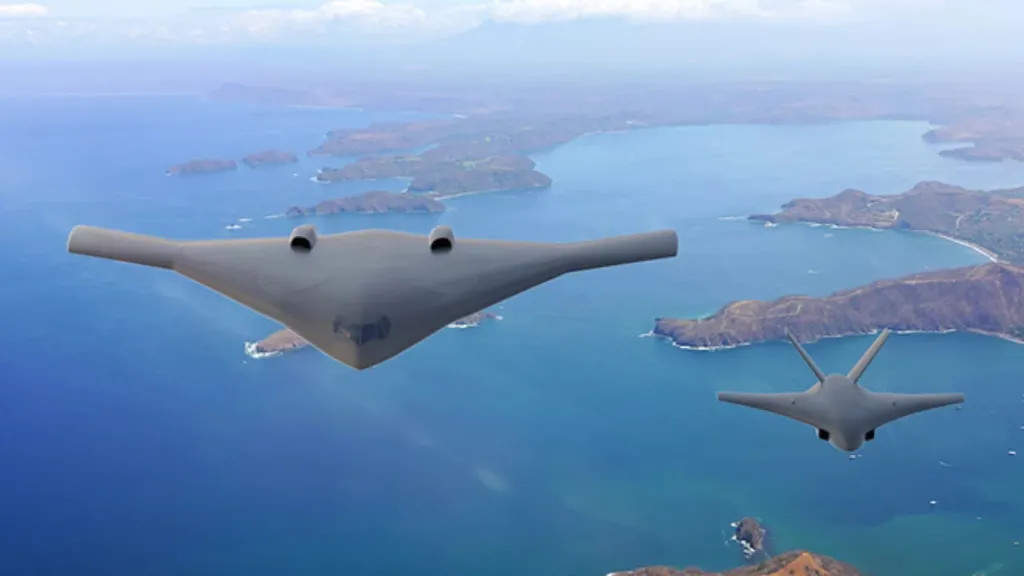
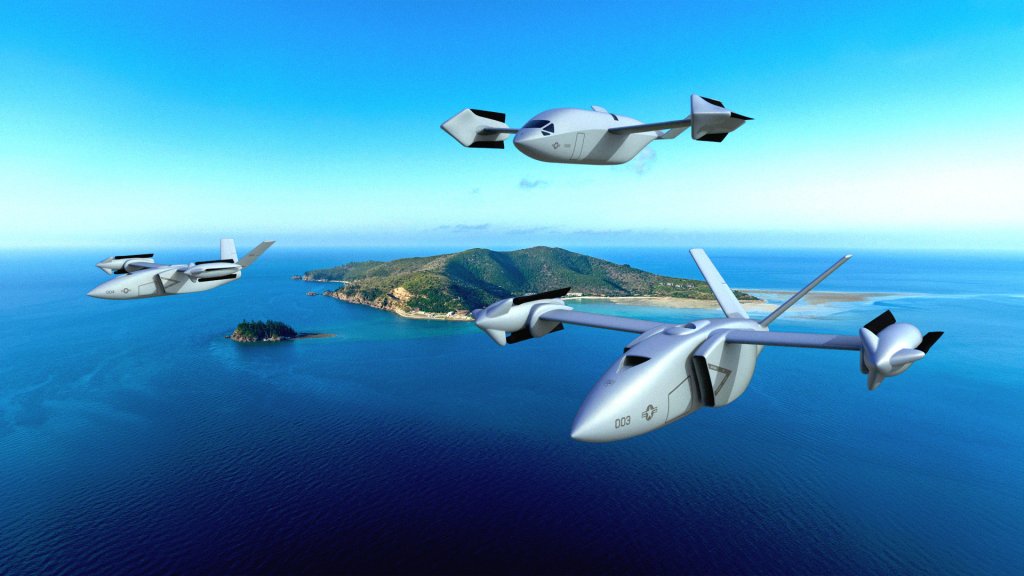
For its part, Air Force Special Operations Command (AFSOC) has long lauded the unique capabilities its CV-22s offer, but also has made no secret of its view that the Osprey is an increasingly dated design. A Bell/Boeing team started the development of the Osprey back in the 1980s and there were numerous serious setbacks before the Marines finally became the first service to start flying them operationally in 2007.
“The CV-22, it’s been a unique capability that the special operations enterprise has always needed,” Air Force Gen. Tony D. Bauernfeind, then head of AFSOC, also told TWZ and other reporters at the time of the lifting of the grounding last March. At the same time, “the V-22 is still 1980s, first-generation tilt-rotor technology. And we’re in 2024.”
Increased range, as well as greater speed to help get across those distances faster, will be key considerations for the Marine’s NGAS effort, especially with an eye toward a future high-end in the Pacific against China. The Corps has touted its ability to conduct long-range and long-endurance MV-22 operations in the Pacific region, but this presents significant challenges and resource requirements, especially when it comes to aerial refueling, as you can read more about here. Those issues would only be magnified in an actual conflict against an opponent with substantial anti-access and area denial capabilities.

The same kinds of considerations have been driving SPRINT/HSVTOL and also played a major role in the U.S. Army’s decision to pick a design based on Bell’s advanced V-280 Valor tilt-rotor as the winner of its Future Long-Range Assault Aircraft (FLRAA) competition. The V-280 already incorporated significant lessons Bell learned from the V-22, as you can learn more about in this past TWZ feature. FLRAA aircraft are now set to replace a substantial part of the Army’s H-60 Black Hawk fleets, including special operations MH-60 variants in service with the elite 160th Special Operation Aviation Regiment (SOAR).

There has been talk about a potential Marine variant or derivative of FLRAA in the past, which could be another route to an MV-22 successor in addition to leveraging SPRINT/HSVTOL. At the same time, the MV-22 currently offers features important to the Marines, such as a folding main wing and rotors to meet shipboard space requirements and a rear ramp that helps with the loading and unloading of larger cargoes, not found on the FLRAA design. It could be complicated to incorporate those and other elements into a Marine version. It’s also worth noting that the Marines have looked at the V-280’s smaller uncrewed cousin, the V-247 Vigilant, to meet separate requirements to provide additional strike and other capabilities.
Since at least 2021, the Navy has been exploring options for replacing at least a portion of its H-60 Seahawk variants, along with its MQ-8B/C Fire Scout drone helicopters, as part of an effort called Future Vertical Lift-Maritime Strike (FVL-MS), as well.
Any Marine discussions about the future of the MV-22 now also come amid serious new scrutiny of the entire Osprey program following last year’s grounding, including from members of Congress on both sides of the political aisle. Much of the Osprey fleet was just grounded again briefly in December following another mishap involving a CV-22.
“As the backbone of Marine Corps combat assault transport capability, MV-22B squadrons have conducted a total of 109 operational deployments and flown over 588,000 flight hours since 2007. The MV-22B flies approximately twice as many flight hours per year as any other Marine Corps rotary-wing aircraft,” the Marine Corps 2025 Aviation Plan does note, reiterating long-standing talking points about its record. “The MV-22 maintains mishap rates on par with other Marine Aviation assets. As of 1 August 2024, the MV-22’s 10-year (2014-2024) Class A mishap rate is 3.15 per every 100,000 flights [sic] hours, lower than the Marine Corps average of 3.24.”
There is considerable uncertainty around the general outlook for U.S. defense spending under the new Trump administration, as well.
Though much remains to be learned about the Marine Corps NGAS plans, the service is now formally looking ahead to what comes after the MV-22.
Update: 2:30 PM EST –
The U.S. Marine Corps has now provided additional information about the NGAS plan and the future outlook for the service’s MV-22s.
“The Next Generation Assault Support (NGAS) will fit within Project Eagle, which is Marine Aviation’s strategic approach over the next three Future Years Defense Program (FYDP) cycles to feed the Requirements and Planning, Programming, Budgeting, and Execution (PPBE) process. The Capability Development Document (CDD) development phase for the NGAS is forecasted for the early 2030s, which will guide Research, Development, Test, and Evaluation (RDT&E) and prototyping beginning in the mid-2030s,” a spokesperson for the Marine Corps’ top headquarters at the Pentagon told TWZ. “Early material solution analysis is ongoing as Marine Aviation closely follows the Army’s Future Long-Range Assault Aircraft (FLRAA) program and considers technology development initiatives within the Defense Advanced Research Projects Agency (DARPA) and across industry. Digital engineering, open architectures, and a modernized acquisition approach will underline Headquarters Marine Corps (HQMC) and Naval Air Systems Command (NAVAIR) Experimental Modernization and Advanced Development Team (XMA-ADT)’s strategy towards capability development and fielding of NGAS.”
“The V-22 Osprey is anticipated to remain in service through 2055. This extended operational timeline is supported by ongoing modernization efforts aimed at addressing specific capability and reliability requirements,” the Marine spokesperson added. “These efforts include component replacement, system redesign, and predictive maintenance initiatives to enhance platform reliability and support the Marine Air-Ground Task Force (MAGTF) and Joint Force in future operating environments. Modernization initiatives will ensure that the V-22 continues to meet the evolving needs of the Marine Corps, providing critical medium lift assault support capabilities well into the future.”
Howard Altman contributed to this story.
Contact the author: joe@twz.com
